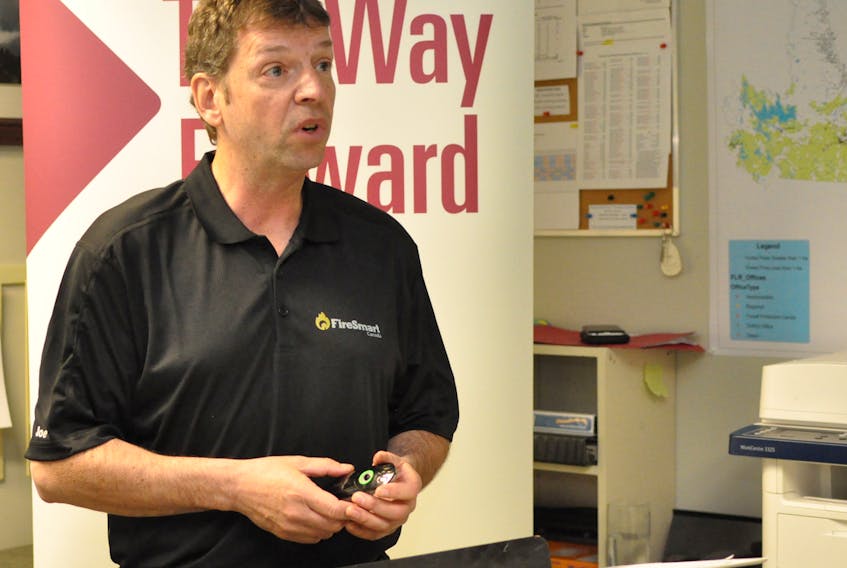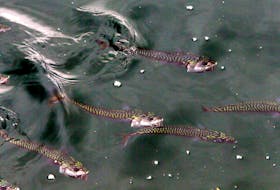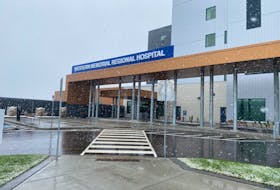Mention Slave Lake and Fort McMurray, Alta. and 100 Mile House in British Columbia and the images that come to mind are of the immense devastation caused to those communities by wildfires.
To think that couldn’t happen in Newfoundland is wrong and so Joe Russell said home owners and cabin owners need to know how to protect their properties.
Russell is a training specialist with the Department of Fisheries and Land Resources and provincial liaison with FireSmart Canada.
He spoke Tuesday about the importance of taking preventative measures at the department’s forest fire centre at the Herald Towers in Corner Brook, where Fisheries and Land Resources Minister Gerry Byrne held a media event to provide an update on the forest fire season.
Russell talked about many homes are now being build near wildland areas in what is known as a wildland/urban interface. And how building design, construction materials used in a home and plant and landscape materials are critical factors in determining the likelihood of a home surviving a wildfire.
In his role with FireSmart, Russell talks with communities about getting involved in the program that provides advice on taking precautions.
Those presentations can be eye-opening, he said following the official part of the event.
Russell said it’s important to understand how vulnerable our communities can be.
“Especially where we are growing homes, extending subdivisions into forested lands,” he said.
“To think that what’s happened in Western Canada can’t happen here is a false understanding.”
The last fire in the province that saw loss of structures was in Wabush in 2013.”
“We’ve been lucky,” he said.
“To think that you’re two blocks in that you’re safe, it’s not the case. It’s how flammable materials in and around your home can be.”
Russell said people need to understand what flammable plants may be around their homes. Things like cedars and junipers carry fire well. They should also avoid packing firewood next to dwellings, clean out eavestroughs and remove leaves from around gardens that fell in the fall.
Russell said it’s important to maintain a greenbelt up to 10 metres from a dwelling.
Moving out further, 10-30 metres, he recommends pruning trees to a height of two metres, spacing out the crowns of trees and raking the ground to clean out anything that can carry a ground fire.
Thirty-100 metres out it’s important to space trees to reduce the impact of embers.
Forest fire facts
The forest fire season in Newfoundland and Labrador runs from May to the end of September.
Since the beginning of this year’s season there have been 71 fires in the province — 67 on the island and four in Labrador.
In Labrador just about all forest fires are caused by lightning, on the island most are the result of human activity.
In total 113.5 hectares have been burned.
During the same time period in 2017 there were only 37 fires and 28.6 hectares burned.
In total, there were 80 fires in 2017 with a total of 699.8 hectares burned.
The department has 84 seasonal forest firefighters, trained for ground suppression of fires, located in 22 depots and offices around the province.
The air services division of the Department of Transportation and works has five water-bombers which are located in Deer Lake, Gander, St. John’s and Happy Valley-Goose Bay.
Also utilizes five contractual helicopters equipped with Bambi buckets.
Source: Department of Fisheries and Land Resources









